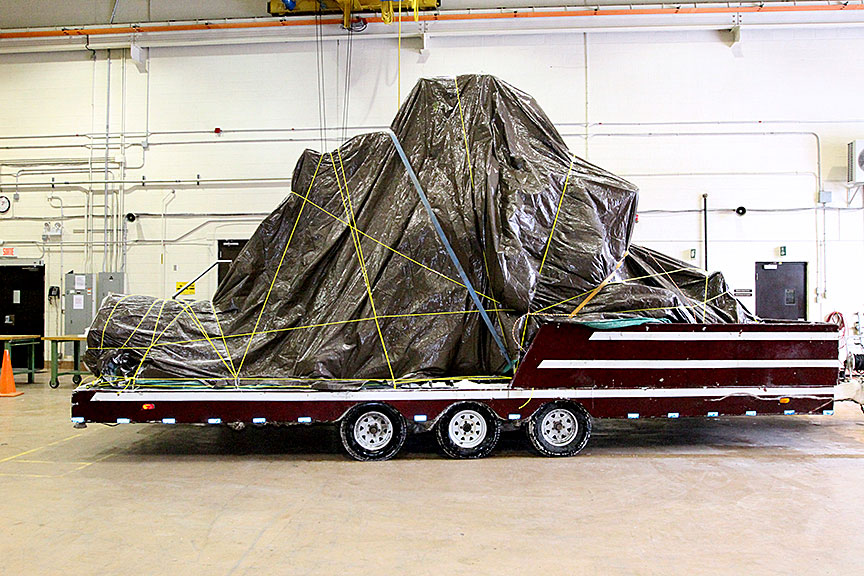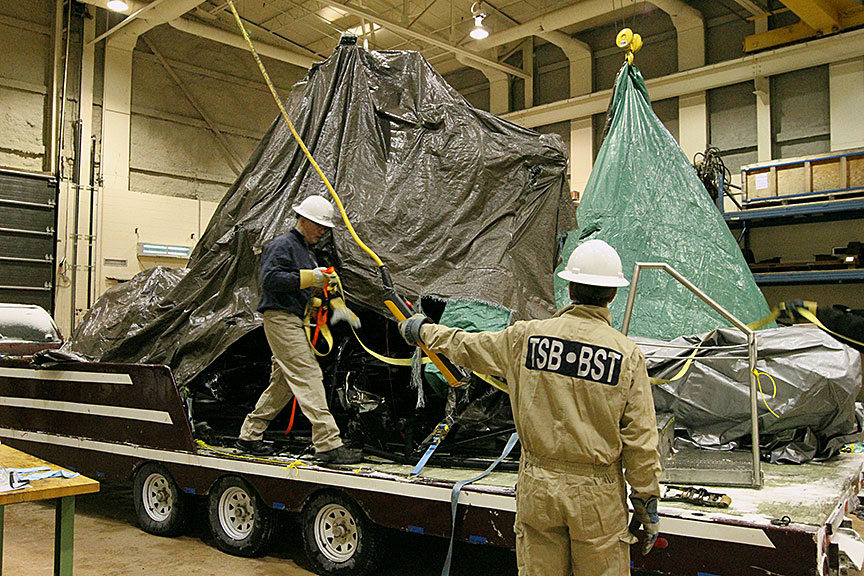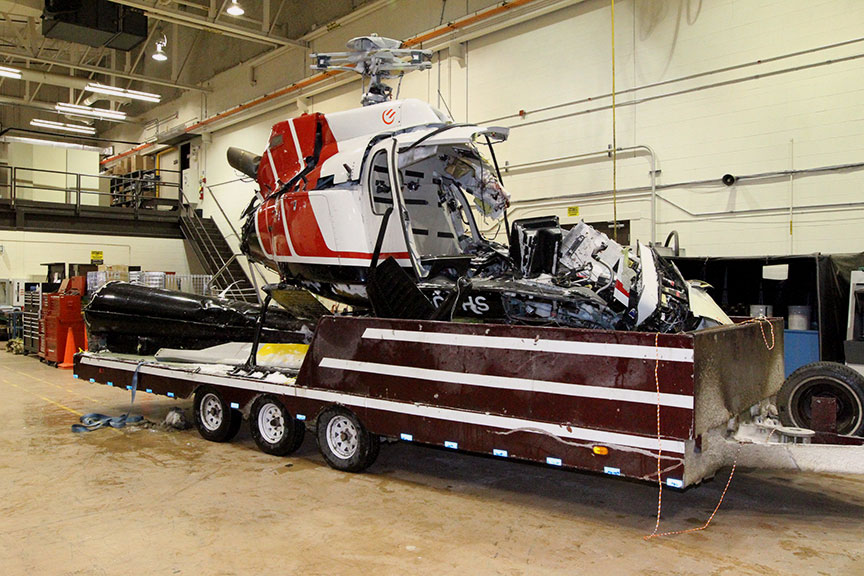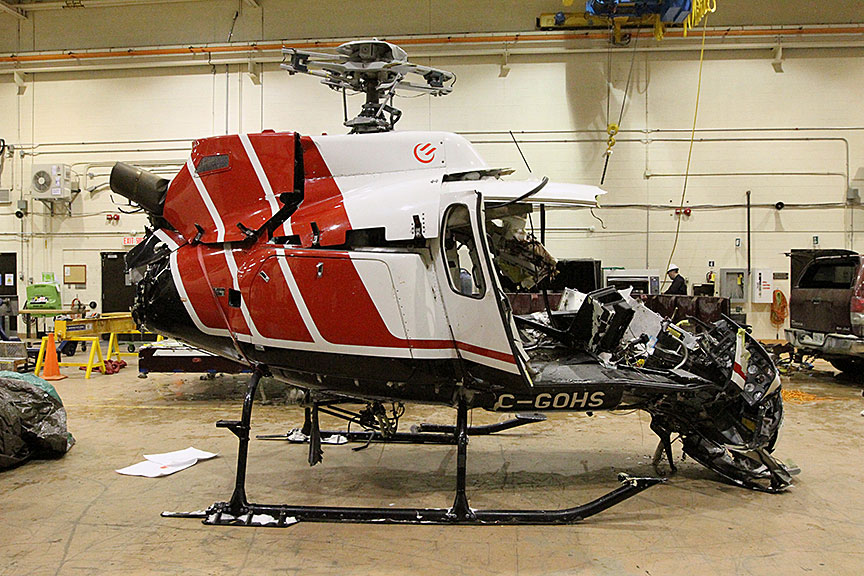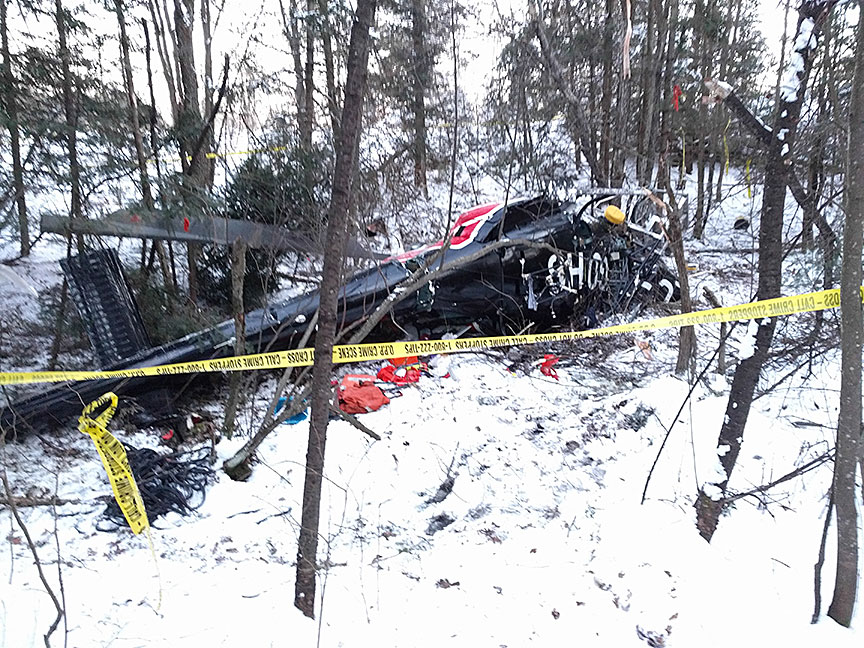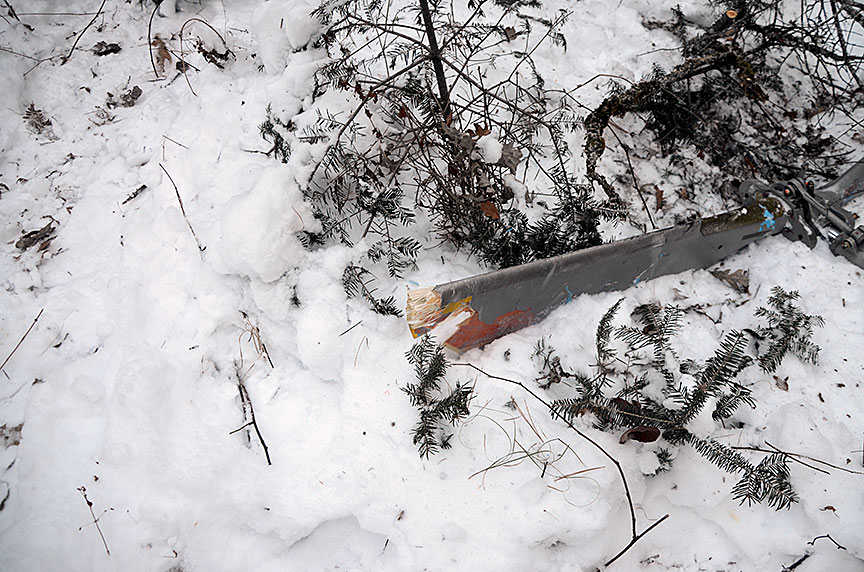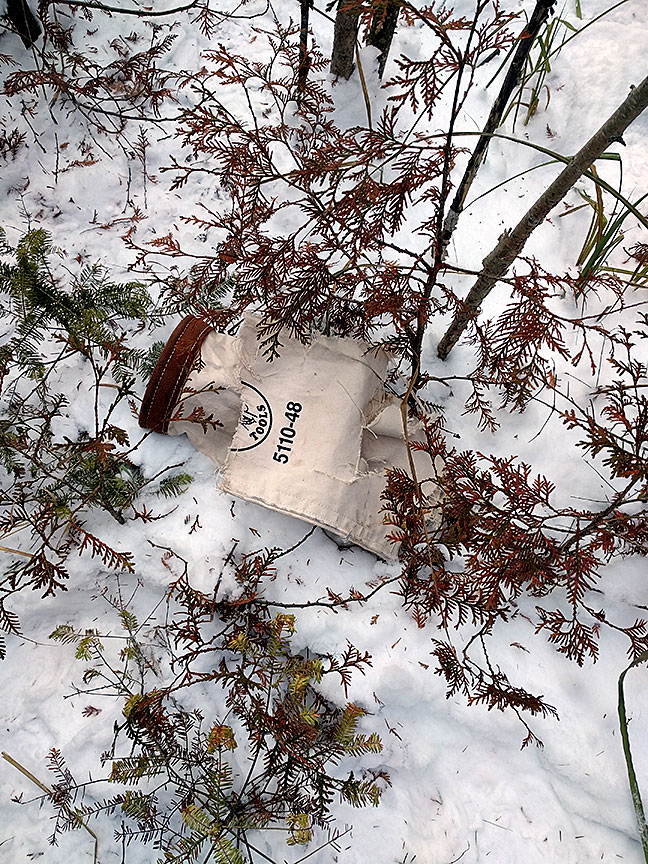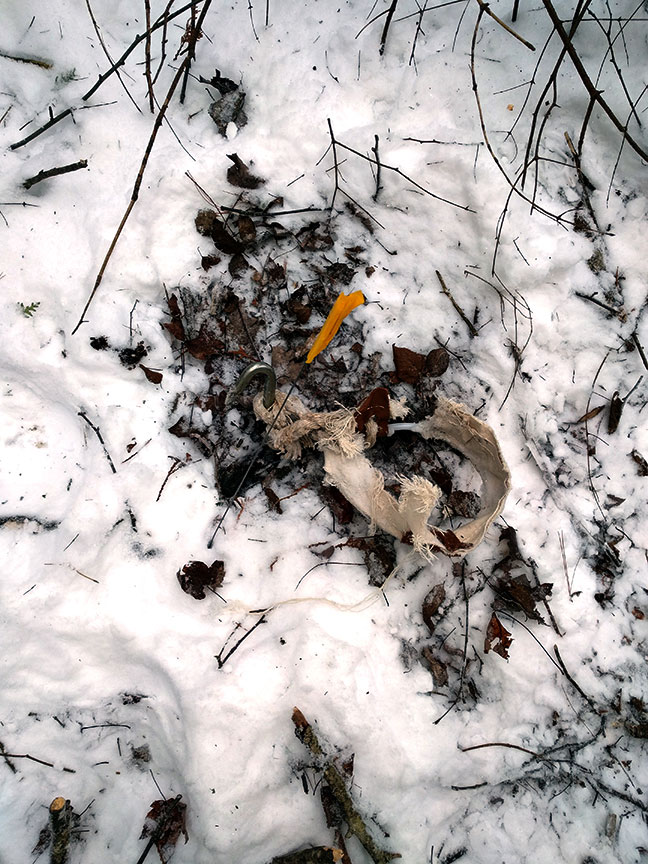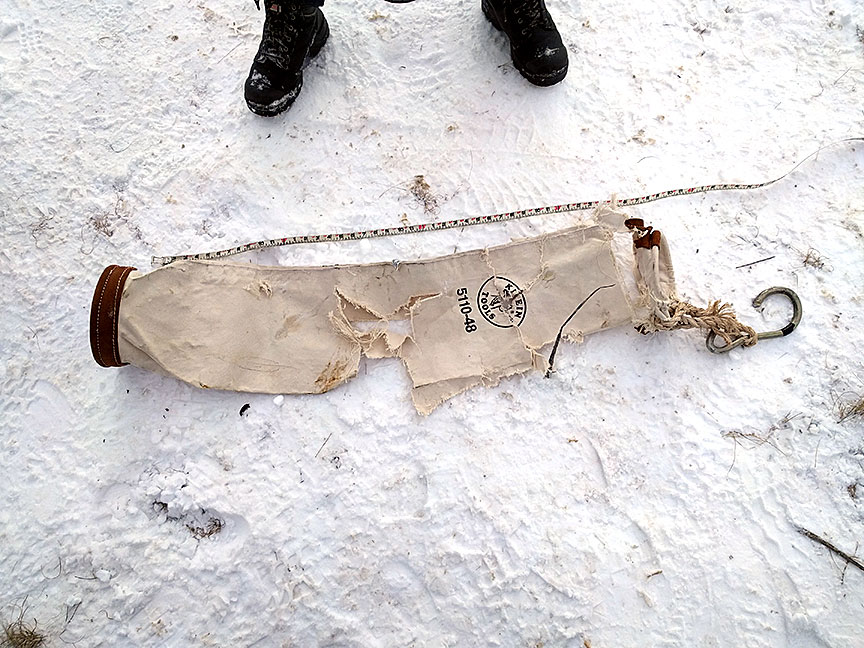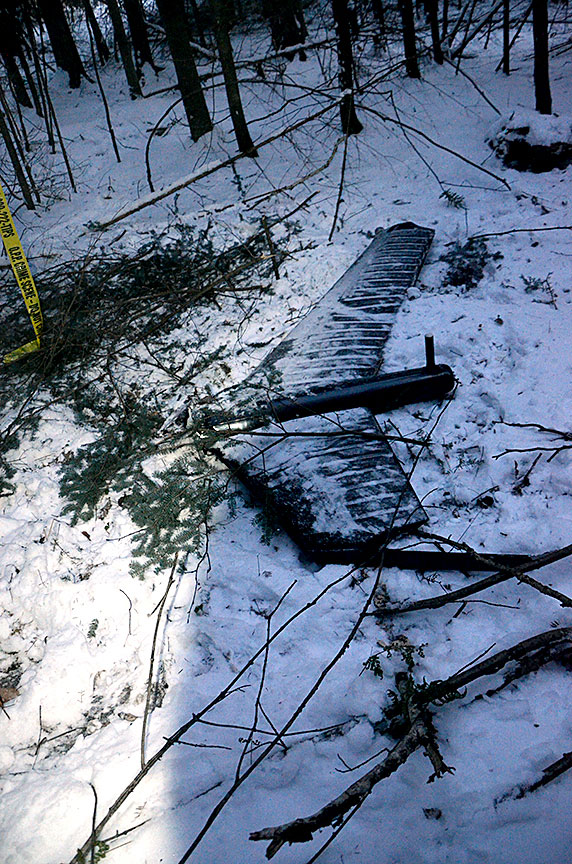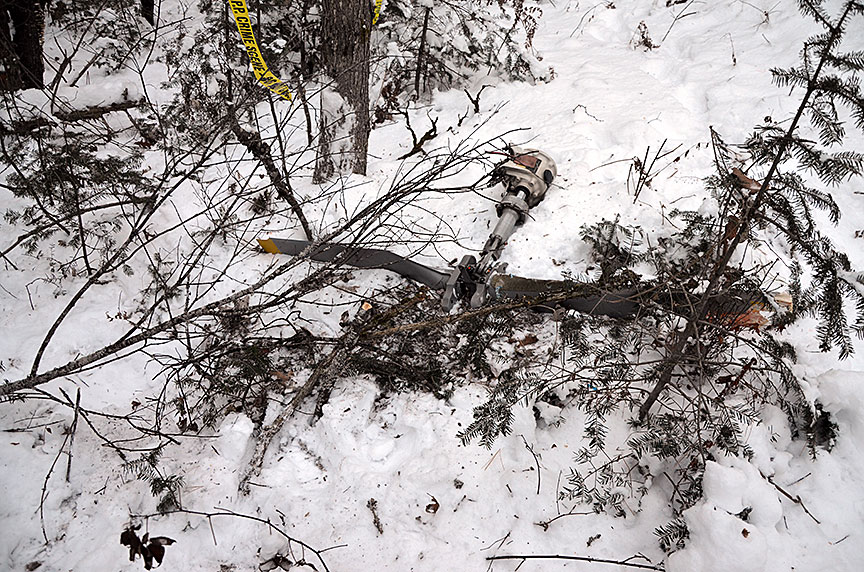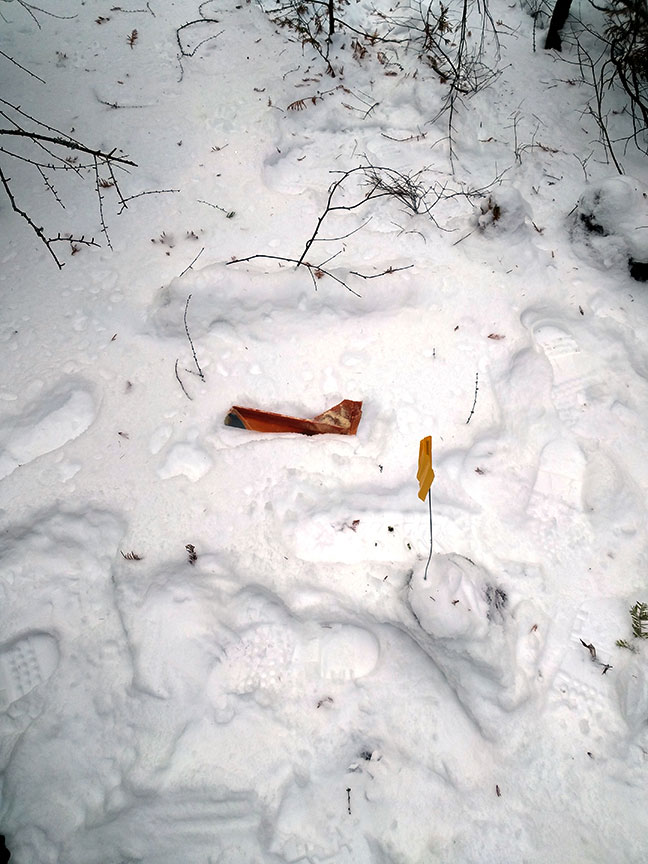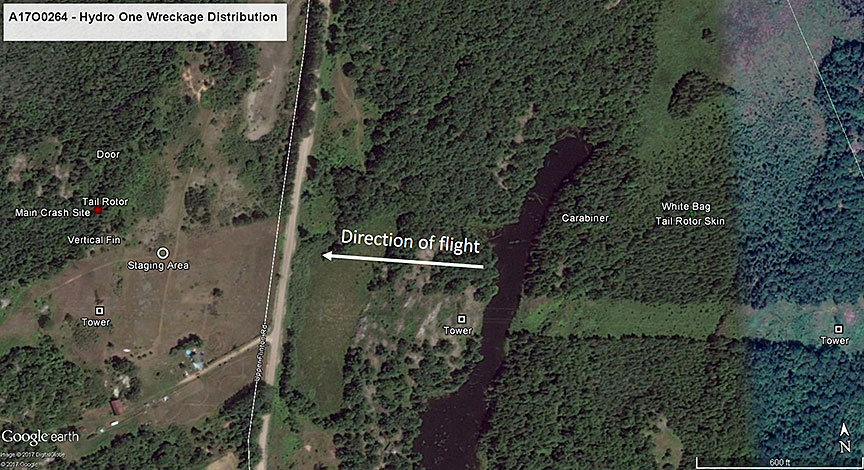Collision with terrain
Hydro One Networks Inc.
Airbus Helicopters AS 350 B2 (helicopter), C-GOHS
Tweed, Ontario, 8 NM NNE
The occurrence
On 14 December 2017, a Hydro One Networks Inc. Airbus Helicopters AS 350 B2 helicopter (registration C-GOHS, serial number 3240) equipped with an external platform, was transporting crews of power line technicians between a staging area and transmission towers in an area located 8 nautical miles north-northeast of Tweed, Ontario.
At 1144 Eastern Standard Time, the pilot picked up a crew of 3 power line technicians near the bottom of a tower for a return flight to the staging area. It had become common practice for power line technicians to attach tool bags and other small items to the external platform for flights to and from work sites. In line with this practice, the technicians attached a few items to the platform while boarding the helicopter, and then took their seats in the aft cabin.
The practice of carrying external loads attached to the platform was not a formalized procedure at the company and, as a result, adequate controls were not in place to ensure that these objects were properly stored or secured. Consequently, an empty canvas supply bag with an attached carabiner that was being carried on the platform was not adequately secured before the helicopter departed for the return flight to the staging area.
When the helicopter was 0.26 nautical miles from the staging area, the canvas bag separated from the platform and struck the helicopter's tail rotor, causing significant damage, severe imbalance, and intense vibration.
Shortly after, while the pilot was attempting to land, the helicopter's tail rotor, tail rotor gearbox, and vertical fin separated from the helicopter. The helicopter became uncontrollable and collided with terrain. The 3 power line technicians were unrestrained and became separated from the helicopter, either slightly before or during the impact, and received fatal injuries from contact with the helicopter or the surrounding terrain. The pilot was fatally injured on impact. The helicopter was destroyed.
Safety communications
Safety advisories
Aviation Safety Advisory A17O0264-D1-A1: Unsecured Cargo and Unrestrained Passengers in Helicopters
Media materials
Media advisory
News release
Presentation
Deployment notice
Investigation information
Download high-resolution photos from the TSB Flickr page.
Class of investigation
This is a class 2 investigation. These investigations are complex and involve several safety issues requiring in-depth analysis. Class 2 investigations, which frequently result in recommendations, are generally completed within 600 days. For more information, see the Policy on Occurrence Classification.
TSB investigation process
There are 3 phases to a TSB investigation
- Field phase: a team of investigators examines the occurrence site and wreckage, interviews witnesses and collects pertinent information.
- Examination and analysis phase: the TSB reviews pertinent records, tests components of the wreckage in the lab, determines the sequence of events and identifies safety deficiencies. When safety deficiencies are suspected or confirmed, the TSB advises the appropriate authority without waiting until publication of the final report.
- Report phase: a confidential draft report is approved by the Board and sent to persons and corporations who are directly concerned by the report. They then have the opportunity to dispute or correct information they believe to be incorrect. The Board considers all representations before approving the final report, which is subsequently released to the public.
For more information, see our Investigation process page.
The TSB is an independent agency that investigates air, marine, pipeline, and rail transportation occurrences. Its sole aim is the advancement of transportation safety. It is not the function of the Board to assign fault or determine civil or criminal liability.
